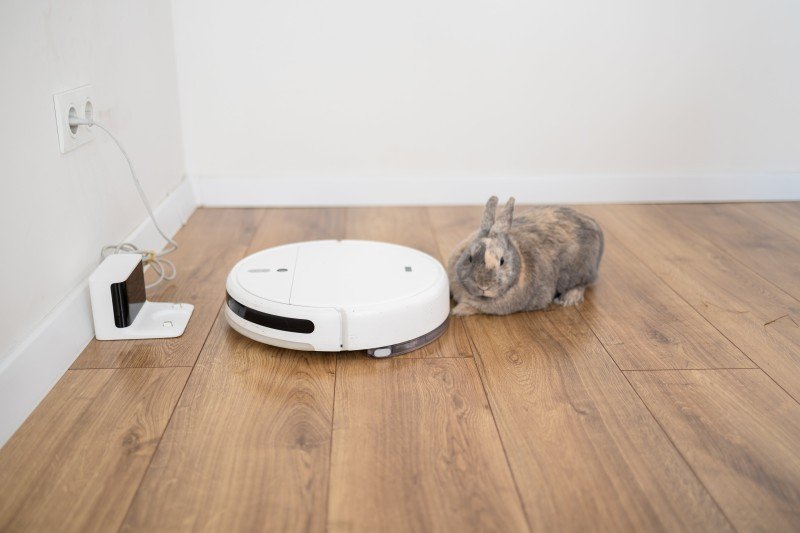The Rise of Robot Vacuum Cleaners: A Comprehensive Guide
In recent years, robotic technology has actually permeated numerous elements of life, considerably changing how jobs are accomplished. One of the most revolutionary developments in this area is the development of robot vacuum. These gadgets have shifted from a high-end item to an essential family tool, offering convenience and efficiency to countless users around the globe. This post will explore the mechanics, benefits, constraints, and popular designs of robot vacuum cleaners, as well as address some frequently asked questions.
What is a Robot Vacuum Cleaner?
A robot vacuum is an autonomous gadget developed to tidy floors without human intervention. Geared up with sensing units, brushes, and vacuum innovation, these small devices can navigate a home, effectively picking up dirt, dust, and debris. Numerous modern-day models come with various features, including Wi-Fi ability, smart device applications, and home mapping technology, which allow users to monitor cleaning progress remotely.
How Robot Vacuum Cleaners Operate
Robot vacuums use a number of technologies to ensure reliable cleaning. Below are the main elements that add to their functionality:
- Navigation Sensors: Most robot vacuums feature various sensors (infrared, ultrasonic, and so on) that help find obstacles, stairs, and walls, enabling the gadget to browse a room effectively.
- Suction Mechanism: The vacuum uses a suction system to collect dirt and dust from surfaces. Numerous models use sophisticated cyclonic technology to enhance suction power.
- Cleaning Brushes: Different types of brushes (side brushes, rolling brushes) help in loosening dirt and directing particles into the vacuum's suction area.
- Battery System: Operating on rechargeable batteries, robot vacuums can clean up autonomously for a predetermined duration before returning to their docking station to charge.
- Smart Features: Many models are geared up with Wi-Fi connectivity, allowing users to manage cleaning schedules, suction power, and zoning through smart device apps. Some even support voice control through clever home devices like Amazon Alexa and Google Assistant.
Benefits of Robot Vacuum Cleaners
The combination of robot vacuum cleaners into everyday cleaning jobs uses numerous considerable benefits:
- Time-Saving: They carry out cleaning autonomously, enabling users to concentrate on other crucial activities.
- Constant Cleaning: Robot vacuums can clean on a regular schedule, making sure that dirt and dust do not accumulate.
- Benefit: Most models can be operated while users are out of the home, or perhaps from remote places through mobile phone apps.
- Area Efficient: With their compact style, they can access locations that traditional vacuums can not, such as under furniture and in tight spaces.
- Smart Technology: The added features, such as mapping and scheduling, provide users with boosted control over their cleaning regimens.
Limitations of Robot Vacuum Cleaners
Regardless of their numerous benefits, robot vacuums do include some constraints:
- Initial Cost: High-quality robot vacuums can be more expensive than traditional vacuums, which may hinder some customers.
- Handbook Assistance Needed: Robot vacuums might fight with big particles or thick carpets, needing occasional manual vacuuming.
- Battery Life: Depending on the design and the size of the home, the battery life might limit how much area can be cleaned up in one session.
- Maintenance: Regular maintenance, such as emptying the dustbin and cleaning brushes, is important to keep the vacuum operating successfully.
Popular Robot Vacuum Models
Here's a table comparing a few of the premier robot vacuum cleaners on the marketplace:
| Model | Suction Power | Battery Life | Smart Features | Cost Range |
|---|---|---|---|---|
| iRobot Roomba 980 | High | As much as 120 min | Wi-Fi, App Control, Alexa | ₤ 600 - ₤ 800 |
| Roborock S7 | Very High | As much as 180 minutes | Mapping, Virtual Barriers, App | ₤ 400 - ₤ 600 |
| Ecovacs Deebot OZMO T8 | High | Up to 240 minutes | AI Smart Navigation, App Control | ₤ 600 - ₤ 700 |
| Neato Botvac D7 | High | Up to 120 min | Mapping, Zone Cleaning | ₤ 600 - ₤ 700 |
| Shark IQ Robot | Moderate | As much as 90 min | Self-Cleaning, App Control | ₤ 400 - ₤ 500 |
Frequently Asked Questions About Robot Vacuum Cleaners
Q1: Can robot vacuum change conventional vacuums?
While robot vacuums can significantly decrease the need for traditional vacuuming, they are best used as a complementary tool instead of a total replacement. For deep cleaning or bigger debris, traditional models may still be necessary.
Q2: Are robot vacuums efficient on all types of floor covering?
Most robot vacuums perform well on tough surfaces like tile and hardwood, along with low-pile carpets. However, users with high-pile carpets may discover minimal efficiency and should consider specific models developed for those surfaces.
Q3: How do robot vacuums handle pet hair?
Lots of models are specifically developed with effective suction and rubber brushes that successfully gather family pet hair from carpets and furniture. It's suggested to examine evaluations concentrating on animal owners' experiences for better insights.
Q4: Do robot vacuums require much upkeep?
Robot vacuums do need some upkeep. related web-site should regularly empty the dustbin, tidy the brushes and sensing units, and inspect for any blockages to preserve optimum efficiency.
Robot vacuum cleaners have changed the cleaning landscape, providing users time-saving, efficient, and hassle-free solutions to floor upkeep. While they may not completely change traditional vacuums, their combination into families symbolizes a step forward in how we approach home tidiness. As innovation continually progresses, we can anticipate even more developments in this space-- making robot vacuums an ever-relevant home tool.

